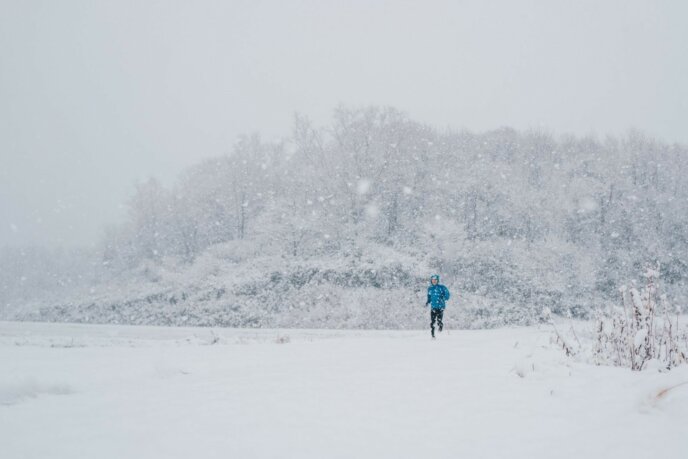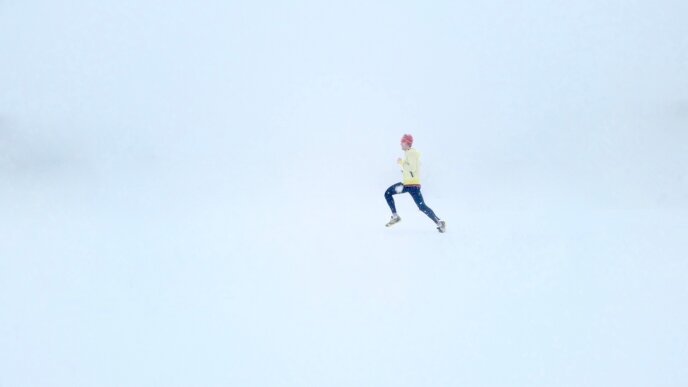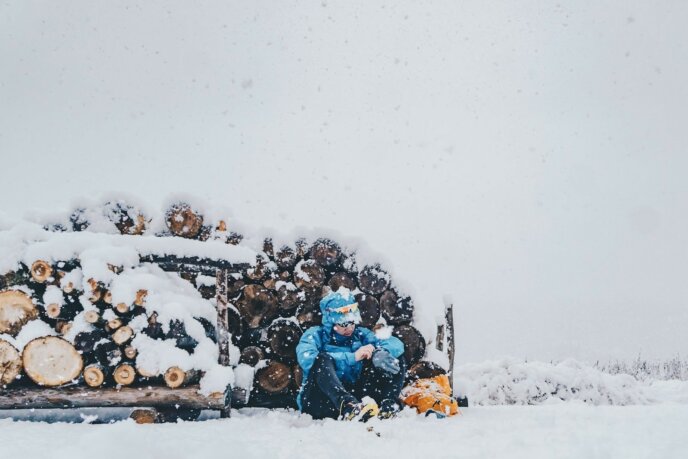A Guide to Winter Running in Niseko
How to get that runner's high even when it's dumping down in Niseko. Sound crazy? Read on.
For some, halting the running habit for a little (or a lot) of snow is a preposterous idea. As a triathlete of four years, and a runner for more, running is a way for me to experience the mountains, clear the mind and get lost in the rhythmic flow of the chase. Coming from California means that instead of contending with scree fields in the Sierras or enthusiastic dogs of Los Angeles, I had a whole new set of challenges to overcome running in Niseko.

The major components of winter running comes down to a slight shift in technique and layering. As the mountains in the Niseko area aren’t runnable during the massive Hokkaido winters, I stick to the pavement and roads around Niseko-Hirafu.
Technique tips:
As a trail runner, I am acutely aware of the ebb and flow of a trail based on the surface changes, from mud to rock gardens to stream crossings. Each transition in the terrain tells me to jump, sidestep, run flat-footed, or otherwise, dance with the mountain. In snow, the rules are the same: keep an eye out for textures that are telltale for trouble, this now including slippery ice and grippy, crunchy snow. They are the two main textures with variations on a spectrum from slush to mirrored. Experience and a few (fingers crossed) slips will tell you what to look out for.
A quick dynamic warm-up is not critical, but will greatly reduce the risk of injury. Running cold, especially when going from a nice 20 degrees to zero, can shock the muscles into tensing up, affecting your form and running economy. If anything, start slow and ramp up the speed gradually.

On ice, I shorten my stride, almost into a shuffle, and keep my centre of gravity over the foot-strike, landing flat-footed to maximise grip. If it’s downhill, I will look out for grippier areas of the path and point my shoes parallel and diagonal on the downhill, almost like the back and forth of a skier jump-turning, again to maximise traction.
On loose, compacted snow, it is safe to turn up the speed to the pace of a summer trail run and feel the wind on your face. The opposite situation will happen in powder snow, which will feel like a succession of knee-ups, thousands of times in a row. Winter running can feel more like a beach run sometimes: hard work, low speed and the same great runner’s high.

What to wear:
Sunglasses or some form of eye protection is a must when running on snow for two main reasons. One is to keep the snow out of your eyes and the second is to avoid snow blindness. The snow reflects massive amounts of UV light, the type you don’t want nuking your eyes because it will pretty much give your cornea a sunburn.
Gloves will be important to keep your extremities warm, as they are the most susceptible to frostbite. You can take them on and off as needed, because they also serve as a good place to dump unwanted heat. A liner from your ski gloves will do just fine, but something that cuts the wind will be best.
Some type of sweat wicking hat or cap will be important to keep the snow from freezing onto your head and provide a buffer against winds.

Sticking to the ethos of running and simplicity, any shoes will do. To maximise control and comfort though, I roll with alpine running shoes kitted with a GoreTex membrane and built in gator. Massive lugs keep glued to the ground and the GoreTex keeps my feet toasty, as the dry snow will eventually melt from the warmth your body will be generating. I use (take a deep breath) LaSportiva Crossover GTX 2.0s, but there are similar offerings from Salomon, North Face, Altra, and Saucony specifically engineered for winter runners.
As with any high-output aerobic activity, running generates bucketfuls of heat and your natural cooling system (sweat), will kick in, cooling you down. Running in the cold is a blessing and a curse. On one hand, being air-cooled machines, the Niseko chill will keep us running harder at good temperatures. On the other hand, we’re also liquid-cooled, generating sweat, which can become bone chilling if we slow down or get caught in weather shifts. A good baselayer is important for winter running to pull moisture away from the skin to keep you warm.

On top of a hard-working baselayer should be a hardshell or softshell, depending on conditions. Pit vents will help to keep the wind out and to cool off fast. The saying “be bold, start cold” applies in winter too. Overdress and five minutes down the road, you’ll want to peel the layers off. I would skip any sort of insulation for anything above -2 degrees.
Running in the winter may seem reserved only for the hardcore or insane, but with a few modifications to your fair-weather routines, you too, can join the tribe of winter runners, gliding through the forest roads under a soft, muted world of snow.